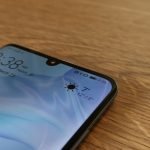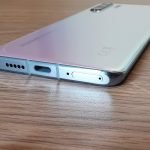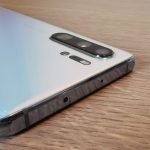With the launch of Huawei’s new photography focused P30 series in the early hours of this morning, no doubt you’ll be thinking “sure, it’s great to know what’s coming, but what’s it actually like?” The answer is getting easier to give these days, because I think it’s been a while since we’ve seen a true end-to-end revolution of what a smartphone does.
Huawei’s P30 Pro is very definitely an evolution of last year’s P20 Pro, and some may say it’s a repackage of the more recent Mate 20 Pro, but there is more to it than that.
With the P30 Pro, Huawei claims to have rewritten the rules of photography, and that’s a bold claim. For, you see, photography is far from the exclusive domain of the smartphone, and as great as a smartphone camera can be, it’s never going to knock off a properly configured DSLR.
Perhaps a more accurate claim might be rewriting the rules of mobile photography, and that’s a slogan we can get behind – it’s something that Huawei has been doing for a couple of years now, and this is evidenced by the Mate 20 Pro sitting atop the DxOMark smartphone camera rankings for the last six months.
We could talk about design elements and colours, but ultimately these don’t impact on the hands-on experience; they’re a talking point; the difference between the generic black slab of a mobile device and a colourful conversation starter. Few who witnessed the P20 Pro’s Twilight colour could deny that colour matters, but in truth it’s more for others than the owner.
Where does the Huawei P30 Pro excel?
In my opinion, these are the areas of the P30 Pro that really stand out over past Huawei smartphones and, indeed, some of the far more recent competition in this space:
- The peak of smartphone / mobile photography. I have little doubt that the P30 Pro is the most capable and broadly competent smartphone camera available, bar none. There’s no umming and ahhing about whether the Pixel 3 is better here, or the Galaxy S10+ better there. They aren’t.
- Most capable zoom on a smartphone device; others are talking about 10X zoom, Huawei has delivered it. Granted, it’s 10X hybrid zoom in the P30 Pro, comprised a 5X optical zoom and extended to 10X with hybrid zoom. There’s also an extension digital zoom (paired with some clever AI) that can deliver 50X zoom. Mostly, it’s not that usable, but with a tripod and a stationary subject, you can achieve some incredible results.
- A super spectrum sensor that sounds like a buzzword, but is so much more. With an RYYB pixel array on sensor, this is a sensor that can detect so much more light than the typical smartphone image sensor, and the results are nothing short of astounding. This sensor, at 40MP resolution, paired with an f/1.6 wide aperture lens, performs magic. There’s no other way to describe it.
We’ve had the opportunity over the last week to take Huawei’s P30 Pro to some of the most iconic locations across the world, from Australia’s Uluru to Paris’ Eiffel Tower, and we’ve seen some extraordinary results from the P30 Pro’s photographic nous.
Huawei P30 Pro as a super night camera
Night photography has long been the new frontier in smartphone photography, and its only really in the last twelve to eighteen months we’ve seen real innovation in this space. Last year, Google’s Pixel wowed us with its ability to capture imagery in situations where the human eye struggled, and though Huawei’s Mate 20 Pro could do reasonably well in similar conditions, it came off a poor second in many.
Not so with the P30 Pro. That superspectrum sensor on the main 40MP sensor can achieve an equivalent ISO of 409,600. Considering most smartphones top out far lower, and even the Mate 20 Pro stops at ISO 102,400. For anyone familiar with higher ISO photography on a DSLR, you’d expect the resulting image to be a noisy mess, and yes, in some circumstances it can be. However, the flip side is those times where it really shines, and the high ISO capabilities change a dimly lit, night scene to something as brightly lit as midday.
Granted, there are going to be some occasions where you’ll want this, and many you won’t. However, nothing caught my surprise more than scenes in the Australian desert with nothing more than the moon overhead, where the human eye could barely perceive the scene in front of us, and the P30 Pro not only could, but captured vivid colour. I can’t say anything more – these are photos that truly speak for themselves.
Undoubtedly at this pointy end, the camera is greatly assisted by a nice wide aperture letting in as much light as possible, and the AI capabilities of the Kirin 980 processor to truly wring every bit of colour and light out of trying scenes.
Huawei P30 Pro for getting up close and personal
For so long, zoom was the province of a DSLR or – at a stretch – maybe a powerful compact cameras. Smartphones struggled with more than 2 or 3X optical zoom due to size constraints, and often made do with digital crops to achieve a zoom that was less than incredible. Nothing compares to a few huge chunks of glass for a pure optical zoom experience over long range, but not all of us want to carry that kind of kit around.
Huawei’s P30 Pro uses a (decreasingly) unique periscope zoom design which delivers 5X pure optical zoom into an 8MP sensor. Using what Huawei dubs a hybrid zoom technology, we can stretch that out to 10X zoom that would pass for optical zoom even though it isn’t entirely. We were impressed with Huawei’s hybrid zoom on the Mate 20 Pro which could stretch out to 5X, but the P30 Pro has gone and doubled that and the results aren’t half bad.
As you can see in the comparison shots below, we’ve taken a couple of 1x zoom photos and 50x zoom on the same subjects, and the results are simply spectacular. This would be nothing amazing for a DSLR, but for a handheld slimline smartphone, it’s quite something else.
In this reviewer’s opinion, Huawei has combined AI, OIS, hybrid zoom and probably some eye of newt to extract a 50X zoom from the P30 Pro, and though it isn’t perfect, in the right environment it can do some amazing things.
None of these sample photos used a tripod. I used a fence post as a bit of a stabiliser for the Eiffel Tower photos, but the last two comparisons were 100% freehand, and the results are just brilliant. 50x zoom isn’t something you’ll need every day, or maybe every week, but there are going to be times where it’s going to mean the difference between capturing what you’re after, and missing it.
Across the range, a wonderfully capable camera
In the places I’ve tried it, the P30 Pro bested any other smartphone camera around. I watched – with some surprise, I might add – as the P30 Pro side-by-side with a Pixel 3 and Samsung Galaxy S10+ consistently produced the better photo.
Others tinkered with manual settings and Huawei’s Pro Mode, hoping to achieve the perfect photo in conditions just so. However, I took a different approach – I wanted to see what Huawei’s camera could do in the hands of a complete photographic amateur – and so left the camera in auto / photo mode the whole time, except for some Night mode photos where indicated. I felt this was a more realistic test of the camera, as anyone who knows what they’re doing can manually adjust shutter speed, aperture, ISO and other settings to get the right photo in just about any light.
What I found was nothing short of incredible. Daylight photography has been done, and though the P30 Pro produced great day time photos, this isn’t the measure of a camera in 2019. What we’re after is clear, crisp photos with definition, tone and the right sharpness on edges, and the P30 Pro delivers. However, most other smartphone cameras deliver this too, so let’s look for something a little more challenging.
As we’ve alluded to above, the night photography on the P30 Pro is one area of sheer excellence. Even Google’s witchcraft in the Pixel 3 couldn’t replicate the P30 Pro in ultra low light scenes, and even the most dedicated photographer with very expensive traditional cameras struggled to achieve the results reached by the humble smartphone.
So impressive was the P30 Pro camera that I simply forgot about other modes. I forgot about adjusting shutter speed or ISO to compensate for different environments, and I just let the phone do its own thing.
Probably my only complaint, and it should be borne in mind this is kind of ridiculous, is that in really low light, the P30 Pro struggled to achieve a reasonable focus. When operating with the aperture wide open at f/1.6, it’s widely acknowledged that even the most capable autofocus systems are going to struggle to find focus due to the very narrow depth of field.
The P30 Pro has some useful tools in its arsenal to compensate for this, including a ToF sensor to help map out exactly what’s in front of the sensor, and depending on the environment, this is useful over a pretty reasonable range. However, in near darkness, even the ToF sensor wasn’t enough to get it right 100% of the time. Some low light photos turned out to be a blurry mess not because the sensor couldn’t pick up enough light, but because it couldn’t do so in conjunction with its AF sensitivity, and thus sometimes it focused too close when, in reality, the nearest object was quite a bit further away.
There’s some incredibly complex science going on behind the scenes to make autofocus work on a smartphone, and in virtually all situations, the P30 Pro can handle the task. It’s just in that really low light that it struggles, and quite frankly, I’ve not seen a smartphone that can do a better job. It’s an easy work around – with manual focus – but one hopes we’ll see improvements in the technology soon enough that mean there’ll be no compromise whatsoever.
So, it takes great photos, how is it in the hand?
The closest parallel I can find is the Mate 20 Pro; in many ways, the P30 Pro is bordering on identical, with similar dimensions and weight, and virtually identical button placement.
Perhaps the most notable move between the two is the fingerprint sensor. Placed around a third of the way up the display on the Mate 20 Pro, the P30 Pro moves the sensor to the lower edge of the display area, which for many will be a far more natural place to attempt an unlock.
Another change is the sensitivity; the P30 Pro fingerprint unlock works faster than the Mate 20’s, and while it might not be the equal of a hardware fingerprint sensor found on the rear of other smartphones, it’s damned near close, and that’s good enough. Less pressure is required than before, and accuracy remains high even though your fingerprint placement need not be as accurate.
The software experience is broadly unchanged from recent devices; despite promises of some changes under the hood, I reckon EMUI 9.1 on Huawei’s Android 9 Pie base is virtually identical, and just as fast as the Mate 20 Pro, perhaps even slightly faster.
You’ll find all the usual array of apps pre-installed, including Huawei’s preference for an app launcher with no drawer for your apps (though you can readily enable one, or install your own launcher completely). Some of the more unique features of the P30 Pro, including some of the AR Apps and distance/volume measurement are found within Huawei’s App Gallery service, allowing users to install and update these extra functionality apps outside the main OS update experience.
Another welcome experience is the huge battery capacity in the P30 Pro. With 4,200mAh on board, this is a smartphone which might last you through a very demanding day, and if you’re having a quiet one, it could well last you into the second as well.
I find manufacturer’s battery claims misguided on a good day, and downright rubbish on a bad day, and while I think the P30 Pro would struggle to reach a full 48 hours use in the hands of the average enthusiast, at least 24 hours is not unreasonable. Huawei has done a lot to optimise Android for its hardware, and combined with AI features to drive down battery consumption, the P30 Pro can promise much, and deliver most of it.
The other neat feature hand-in-hand here is the Supercharger included in the retail packaging; delivering 40W of power, Huawei’s P30 Pro can reach 70% charge from flat in just on 30 minutes. If you’re travelling, or away from the supercharger, the 15W quickcharge standard is supported too, and while it mightn’t be as fast, it’s still decent when caught out.
The P30 Pro retains wireless charging (and reverse charging for your mates or other wireless Qi compatible devices), though it should be noted it’s far less speedy. For me, I use wireless charging to avoid messing around with cables overnight, and for that, it’s perfect. Drop it onto the charger when it’s lights out, and by sun up, the P30 Pro is fully charged and ready for another day’s adventures.
It’s clear that Huawei has put a lot of effort into delivering the P30 Pro experience, not just in terms of delivering new features and a breathtaking camera module, but also in terms of refining and revising the in-hand experience over successive models. This journey feels like it began with the P10 in 2017, and has accelerated so rapidly to deliver us the P30 Pro in 2019.
I’m honestly less sure what I could cover off in a full review, having reached these conclusions in a hands-on piece, but if there’s wrinkles to be found, they’re going to be identified over time. Let’s see if we can’t rule out any real showstoppers by the time of retail launch in Australia on 16 April.
Chris travelled to Paris, France as guest of Huawei Technologies (Australia) to cover the P30 series launch. Prior, Chris travelled to Uluru, Australia to fully experience the P30 Pro’s photographic capabilities.
Ausdroid wishes to acknowledge and thank the Aṉangu people as the traditional owners and guardians of the land around Uluru where we worked last week. Our journey would have been incomplete without the knowledge of the locals and their permission to photograph upon their land.
Disclosure Statement
Huawei has allowed Ausdroid to retain the P30 Pro for review in the short term and to monitor software updates longer term.





























Yes, the combination of its camera / optics / sensors / image processing from P30 pro is amazing. However, I can’t help but to notice what a great photographer you are, Chris. The way you capture these images is something beyond camera’s capability. Really well done – many congrats!
The price is the killer, the mate 10 pro I currently use was 1099 at launch barely more than a year ago, now they want $500 more for just the usual yearly update.
I’m just going to wait for the one plus 7.
As a p20 pro owner I am drawn to this phone however when the Samsung S10 is cheaper, with much better software, more availability and a wider range of accessories I’m struggling to see it as a better buy.